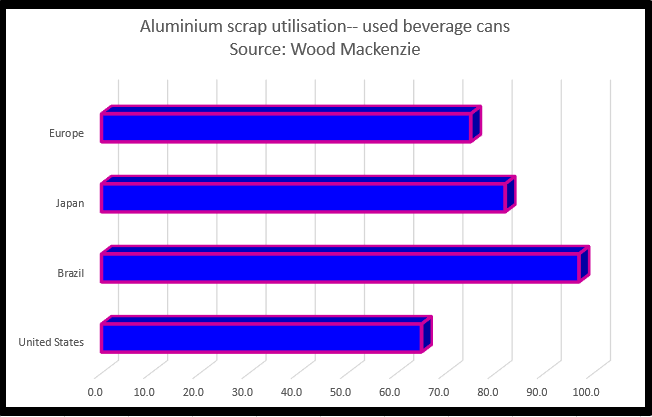
LONDON: A prolonged period of high aluminium prices created partly by output cuts in China is expected to encourage new capacity in other parts of the world, which will eventually weigh on prices trading at 10-year highs.
Benchmark aluminium on the London Metal Exchange hit US$2,734.5 a tonne on Wednesday, a gain of 37per cent this year and the highest since May 2011. Aluminium is widely used in the transport, packaging and construction industries.
Robust demand growth, surging freight costs and shortages in Europe and the United States started the rally earlier this year with China picking up the baton in recent months by imposing output cuts to reduce power use and cut emissions.
Deficits and high prices over the next few years will sustain aluminium prices, leading to investment in new capacity in Russia, Malaysia, India and the Middle East, said Macquarie analyst Lynn Zhao.
Zhao estimates nearly 2.35 million tonnes of China’s aluminium capacity is currently idled.
“Year-to-date production losses in China have reached 520,000 tonnes. Our 2021 estimate for the market balance has moved from a 530,000 tonne surplus to a 700,000 tonne deficit. We expect persistent deficits through 2025.”
Analysts expect global total aluminium demand at around 76 million tonnes in 2025, up 10per cent from this year, leaving a supply deficit of about two million tonnes.
Aluminium prices are significantly above the marginal costs of production or the 90th percentile on the cost curve, which Macquarie estimates at around US$2,100 a tonne on a global basis.
Higher prices could also persuade Chinese companies to build aluminium smelters in places such as Indonesia.
New capacity will have to be supplemented with higher utilisation of scrap, already around 65-70per cent globally, according to Wood Mackenzie analyst Uday Patel.
“Scrap is the bridge between carbon emissions targets and how we meet them,” Patel said. “China is in deficit, it has imported 1.5 million tonnes in the seven months to July after importing two million tonnes last year.”
Wood Mackenzie estimates marginal costs at around US$1,900 a tonne for China and just above US$1,950 a tonne for the rest of the world.


